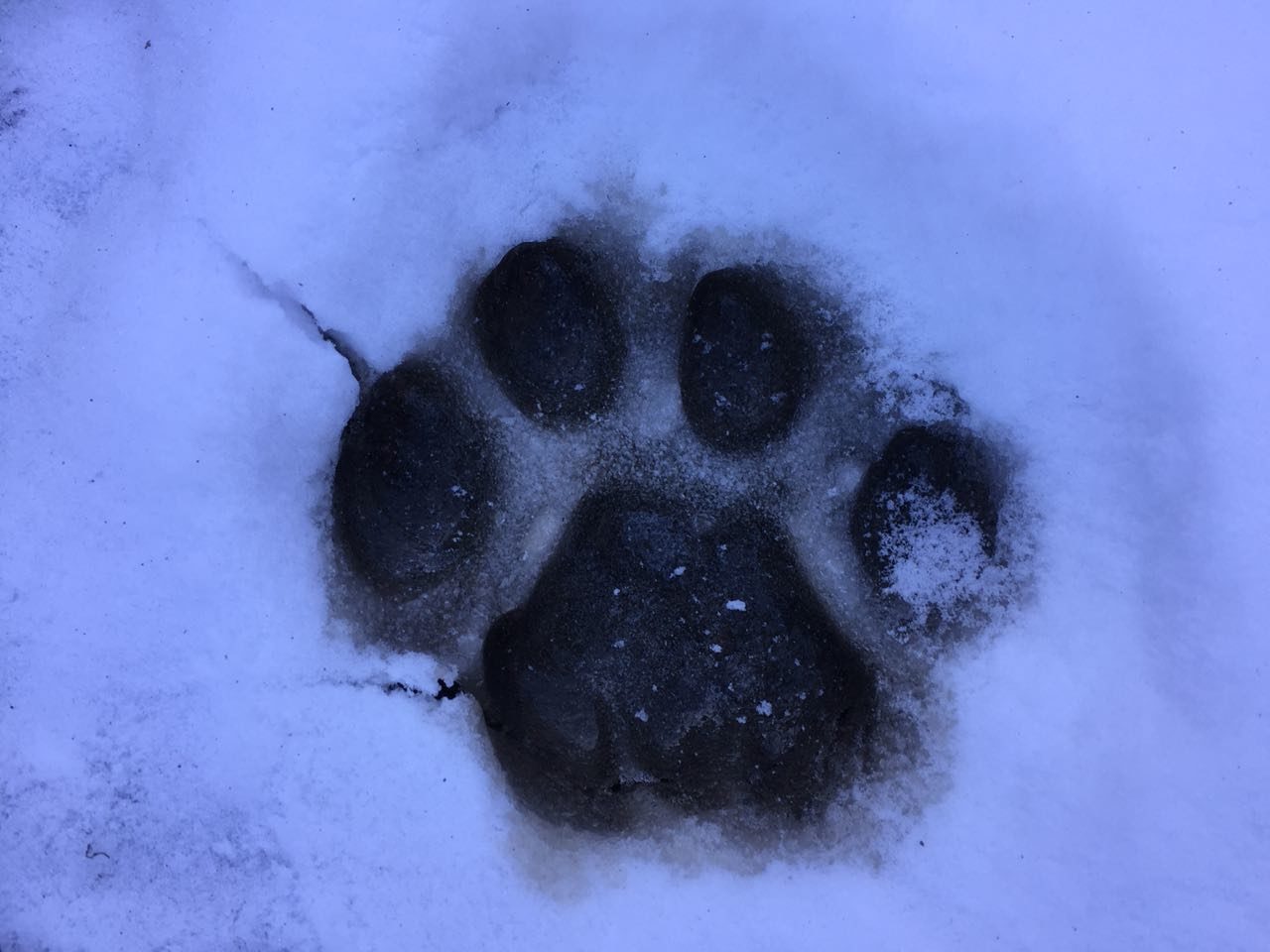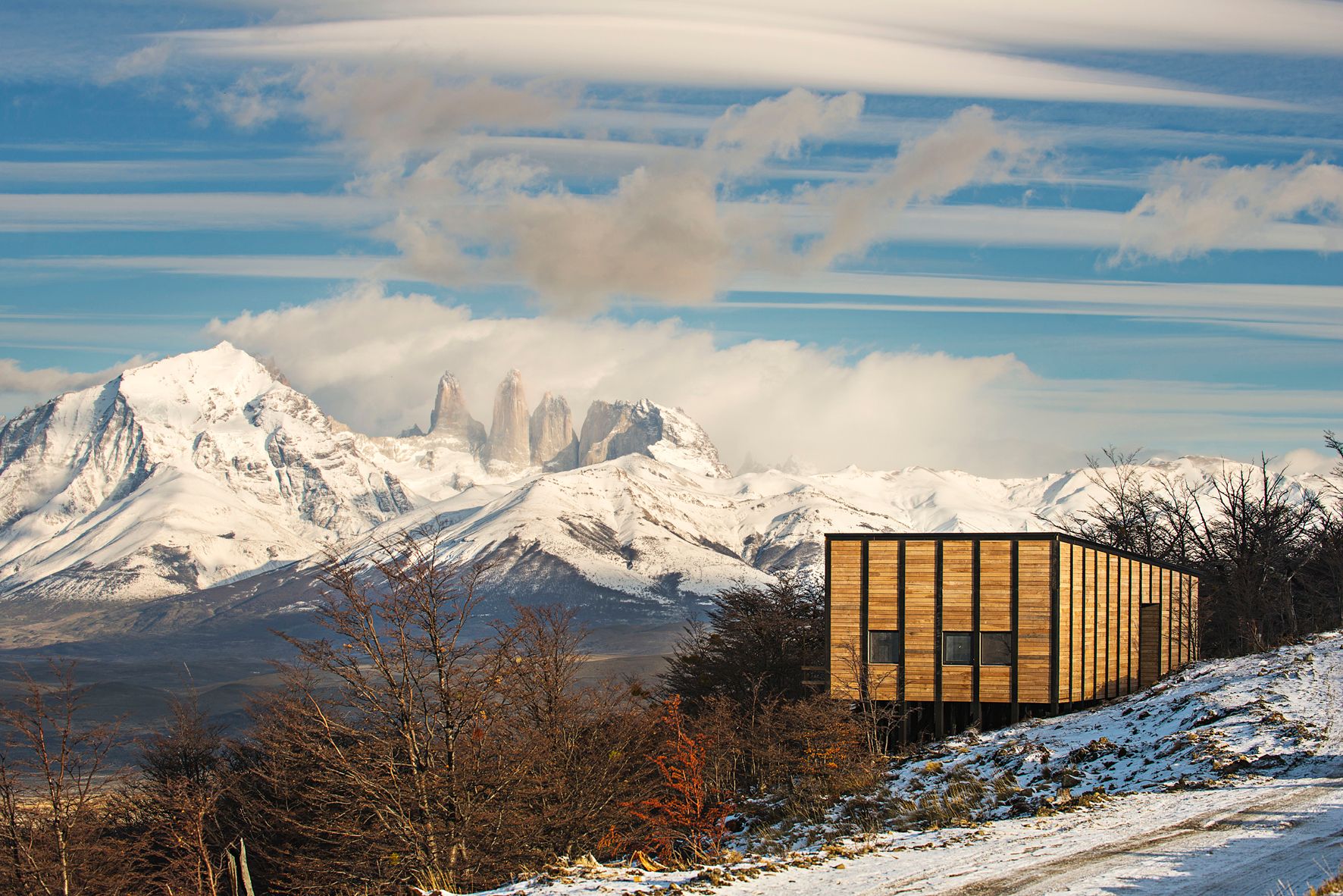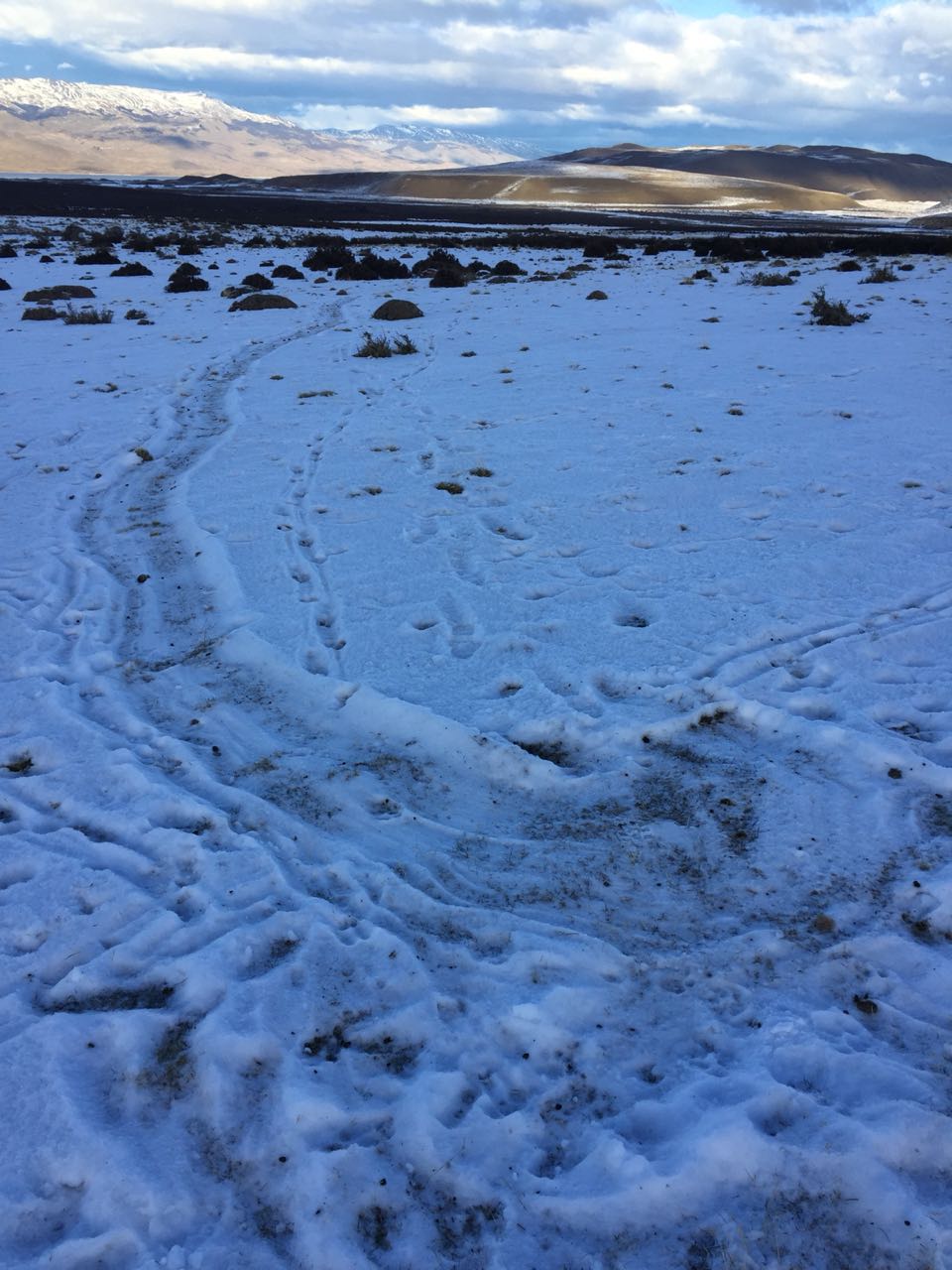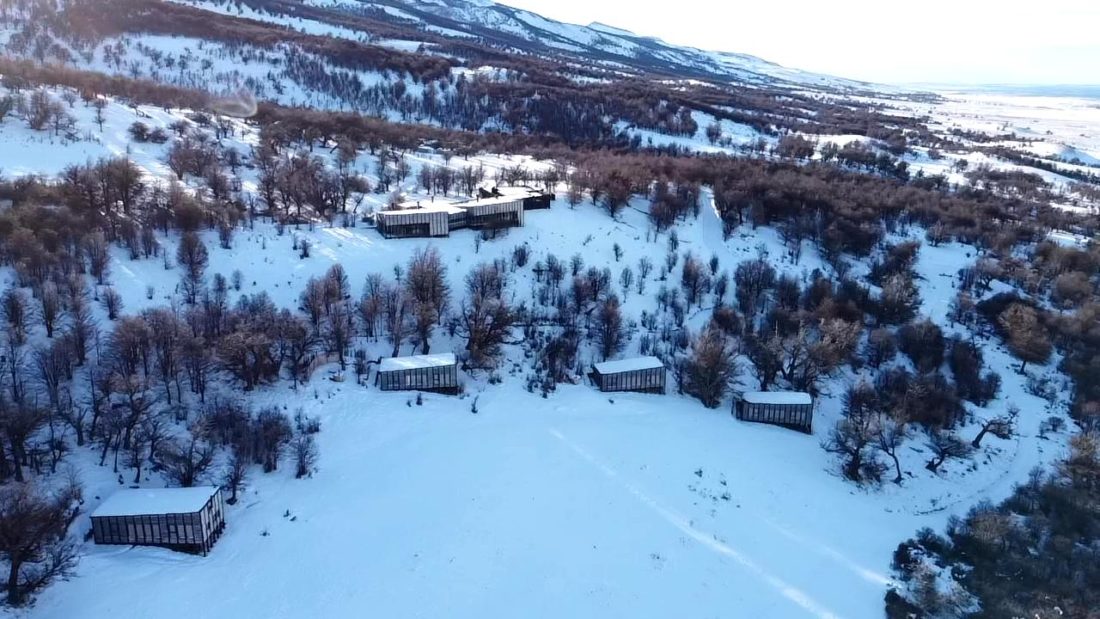Snow stretches across the Patagonian Steppe, a sea of glistening white reaching as far as the eye can see. As temperatures plummet, animals shelter in the forests below the majestic towers that lend this frosty land its name. A guanaco scrapes at the snow, searching for some icy tufts of grass beneath. A puma eyes it from the trees, padding softly through the snow; it makes no sound, only a trail of footprints marking its advance.

Photo credit: Eduardo Minte. A close-up of a puma print in the snow captured by our team
The wind is picking up; piercing westerly gusts from the ice fields nearby freezing everything in its path. A condor circles overhead, surveying the wilderness from the icy heavens. She at least will not go hungry; this frozen breeze will bring rich pickings for this scavenger of the skies.
Patagonia in the winter can be a harsh place, but the experience brings challenges and rewards in equal measure – the landscape offers stunning beauty and peace for those who spend the season here. For our team at Awasi Patagonia, the months are spent working on repairs, checking up on the local wildlife and preparing the lodge for the spring opening.
Oh and there’s always time for a spot of skiing…
Let’s hear more from Awasi Head Guide, Cristian Asun, about what life is like at Relais & Chateaux’s most southerly hotel during the winter months.
Who is currently at the hotel?
As with every winter, several members of the maintenance team have remained on site to work on any repairs and upgrades that are required. The team is also tasked with taking care of the lodge and the reserve during the winter, looking after the site and protecting it from any damage caused by the conditions typical of Southern Patagonia at this time of the year. Our head guide, Cristian Asun, makes regular trips to the lodge when he can, but this winter these have been fairly infrequent as movement is so limited due to the quarantine currently in place in Chile. Typically over the winter months some of our guides would also remain on the reserve to track the pumas, but given the restrictions in place we decided not to do that this year.
With fewer people around is it easier to spot more wildlife?
Across the landscape there are lots of signs of activity, although you don’t always see the animals themselves. In the colder months, the wildlife descends from the mountains to avoid the worst of the snow and freezing temperatures, and it is more common to find them on the plateaus or taking shelter in the forests. We have seen a lot of guanacos, condors, caracaras and owls in the last few months. You can also see many traces of the famous cats that pad across these lands, such as Geoffroy’s Cat or of course Puma, although you have to be alert; with so much snowfall their tracks are quickly covered.
What is it like to be alone up at the Awasi Patagonia lodge?
It can be pretty challenging for the team members tasked with staying on site given the location; during off-season when the lodge is closed to visitors you can feel very isolated. But, it’s also rewarding to be in a place of so much beauty and to be able to enjoy the peace and splendour of such a vast, wild expanse. This winter has been unique for two reasons. Firstly, as a result of the Covid-19 pandemic the Torres del Paine National Park closed for tourists, and although in the winter there are normally very few visitors at the best of times, now it is particularly empty. In addition, this has been one of the fiercest winters we have experienced in years, with heavy snowfall and especially low temperatures, even for Patagonia’s capricious climate. The park feels more remote and secluded than ever; it is as if time stood still, totally isolated from the world.

How many hours of light are there?
The darkest month of the winter is June, with the shortest days. Now, the days really feel like they are lengthening once again, which is very motivating for the team up there! Dawn is breaking at around 9.30am or 10.00am, with sunset somewhere around 5.30pm. Whilst we’re still in the middle of winter, the feeling is that the worst is over and spring is fast approaching, which is one of the most colourful seasons and a lovely, inspiring time of the year to be in Patagonia.

Photo credit: Eduardo Minte. Signs of a struggle – marks left by a puma dragging its prey through the snow

